Bat Poo, Bruises, Wobbly Bridges, Waterfalls and Breathtaking Views: Our Millennium Cave Adventure
We arrived at Espiritu Santo, the second-biggest island in Vanuatu and one of the few places outside Efate’s main island where you could find a supermarket—or, more importantly, get cash. Santo is known for its diving, and thanks to direct flights from Australia (assuming the Vanuatu airline isn’t on its annual bankruptcy pause), it’s relatively accessible. That said, with only a trickle of flights coming in for months, tourism had taken a hit, and sailors like us were welcomed with open arms.
Our time on Santo was brief as we were there to drop off a crew member heading home. With just one free day, diving was out of the question—our skills were rustier than those popular shipwrecks here. Instead, we opted for the Millennium Cave Tour, which I’d spotted online. At first, I hesitated, unsure how challenging it might be. But after chatting with some other yachties in their 60s who described it as “a bit hairy but doable,” we decided we were up for the adventure. Plus, everyone said it was a must-do.
At 8 a.m., our driver Michele picked us up and dropped us off at the office in town, just a short drive away. There, we were briefed on the tour and promptly signed our lives away. After that, it was a bumpy 1.5-hour car ride to Nambel Village. There, we met our guide Tony—Michele’s brother, as it turned out—and the adventure began. A wobbly bamboo bridge and a 30-minute walk through slippery, muddy paths led us to the next village. Tony went barefoot with the confidence of someone who’d never slipped in their life, while Mark’s trainers kept getting stuck in the mud. My hiking boots, thankfully, held their ground.

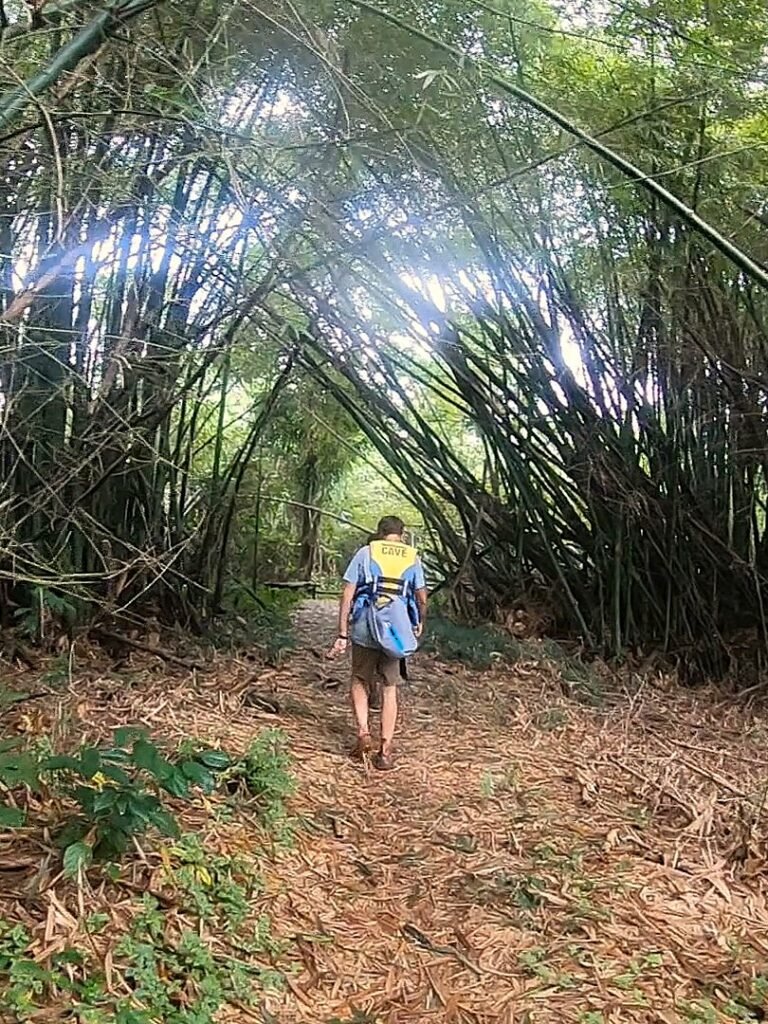
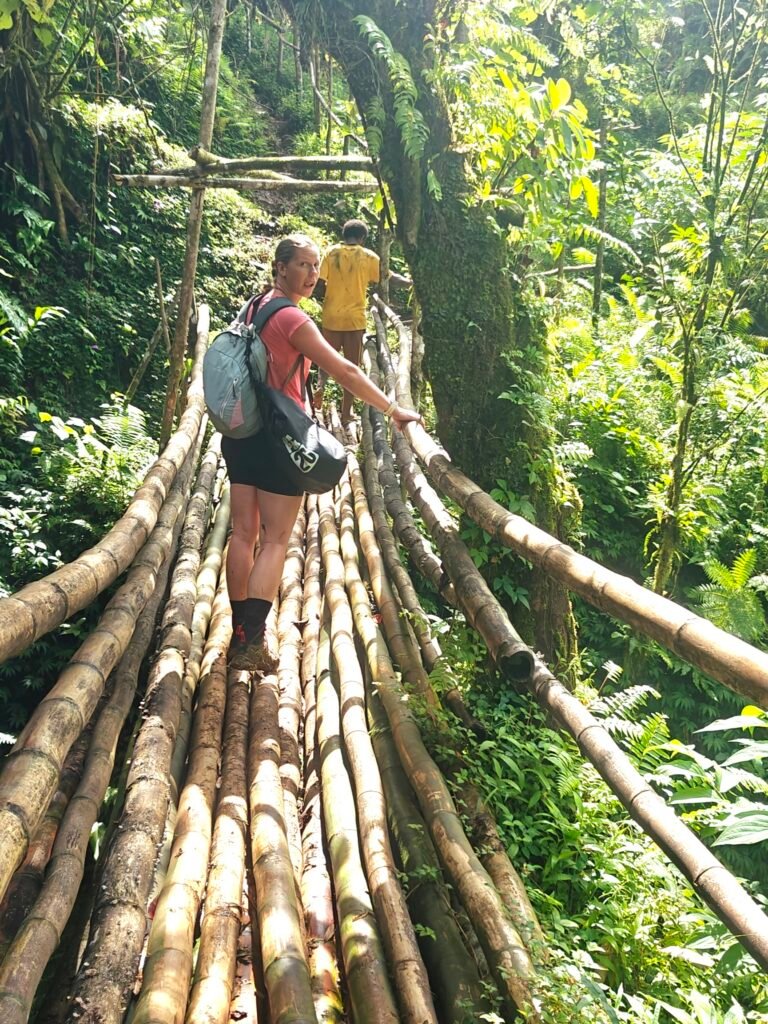
At Funaspef Village, we swapped valuables for life jackets, left everything behind that didn’t fit in our wet bags, and noticed even Tony decided it was time for shoes. After another hour and a half of river crossings and mildly hilly terrain, we arrived at a bench where Tony initiated us into the clay-painting ritual. He painted our faces with symbolic designs representing waterfalls, rivers, rocks, and safety to ensure our protection through the cave—though none of these seemed to protect us from the copious amounts of bat and bird poo we’d soon encounter.
The descent into the cave required a bit of scrambling. The ladders were a mix of “just about sturdy” and “don’t look down,” but soon we stood before the impressive entrance. Tony handed us waterproof torches and led the way into the cave. The cave, an impressive 50 metres high and 400 metres long, is the largest in Vanuatu and runs a freshwater river through its depths. Once a sacred refuge during tribal conflicts, it became a tourist attraction in 2000, with proceeds benefiting local villages and schools.
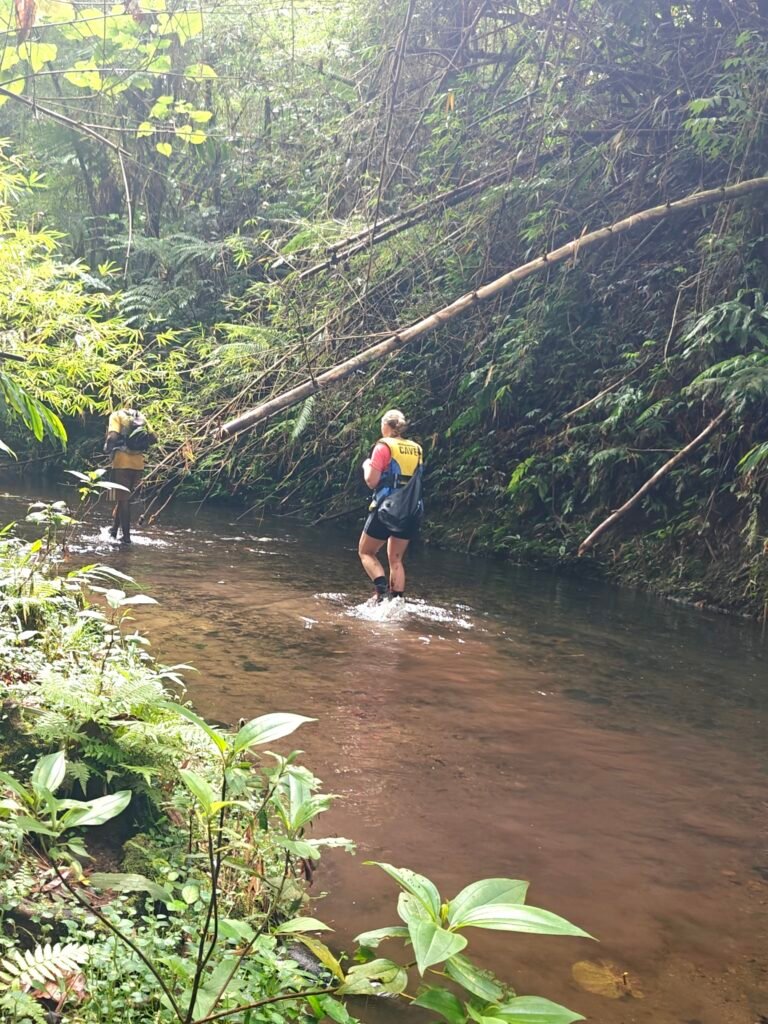
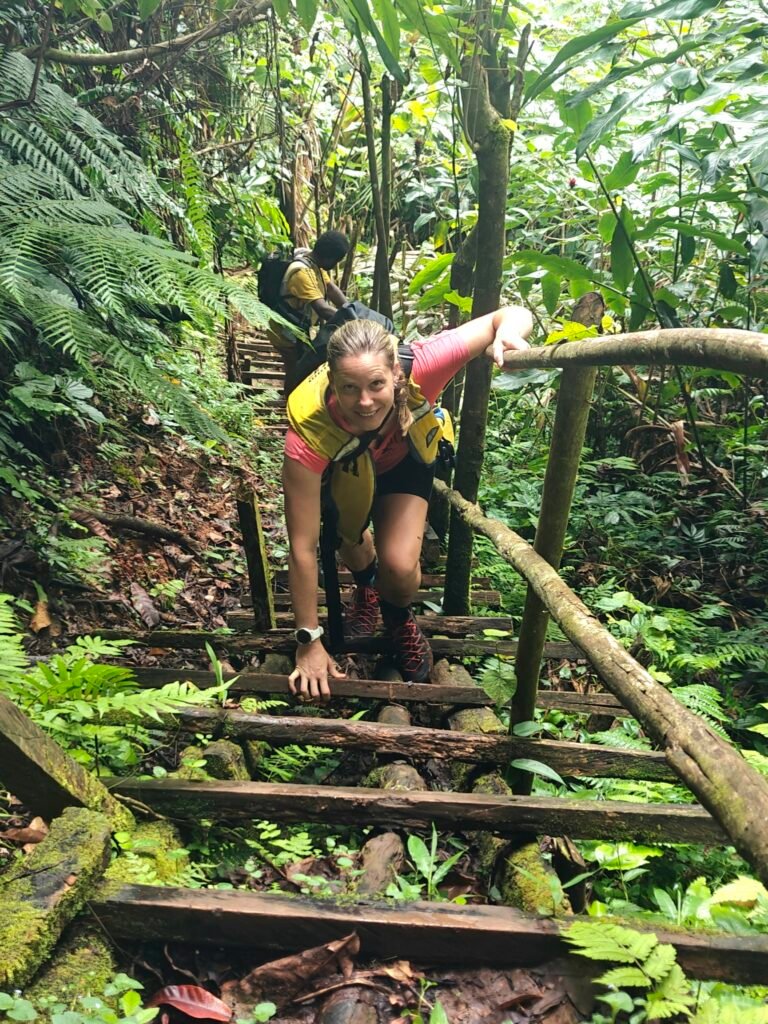
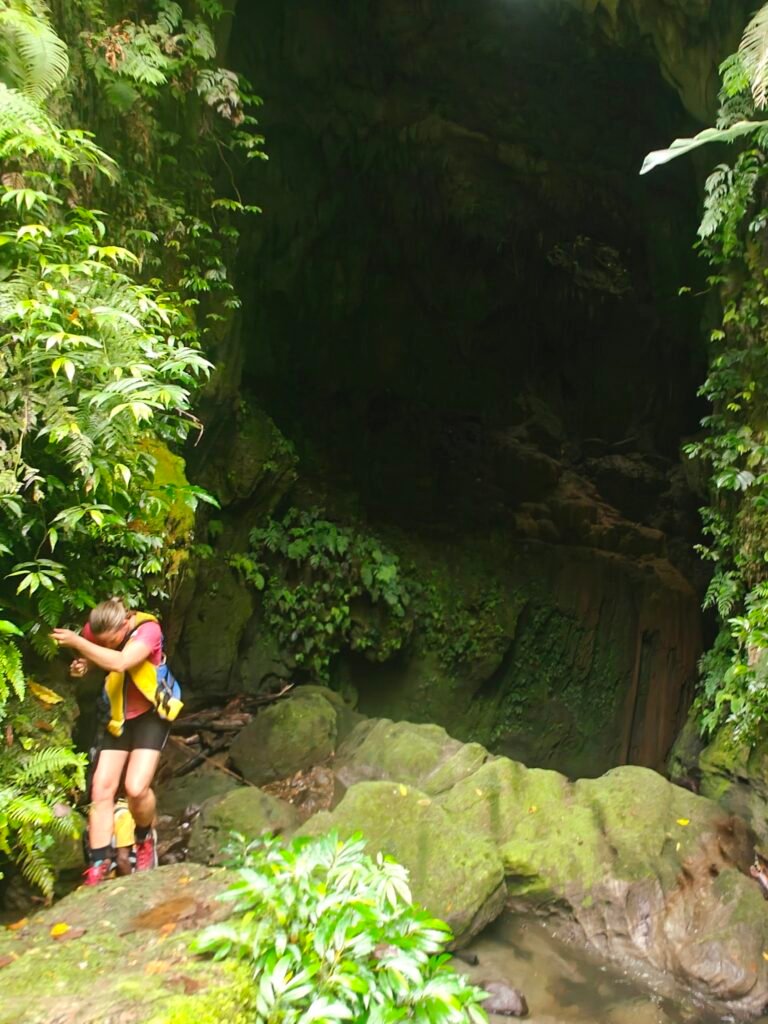
Inside, the cave’s hundreds of bats and birds added a Hitchcockian vibe, flapping madly if you dared to shine a torch at them. Quick tip: keep your mouth shut when looking up unless you fancy an unplanned snack. The rocks were slick with droppings, making every step and handhold a slippery gamble. And if you tried to wash off your hands in the river—it was just as, let’s say, “enriched” as the rocks.
The pièce de résistance? Swimming through the last 50 metres of the cave, where the river is so deep you can no longer stand. Juggling the torch in one hand while trying not to swallow cave soup (a delightful blend of bat droppings and water) was no easy feat. Tony, miles ahead as usual, seemed to forget we weren’t locals with bat-like agility.
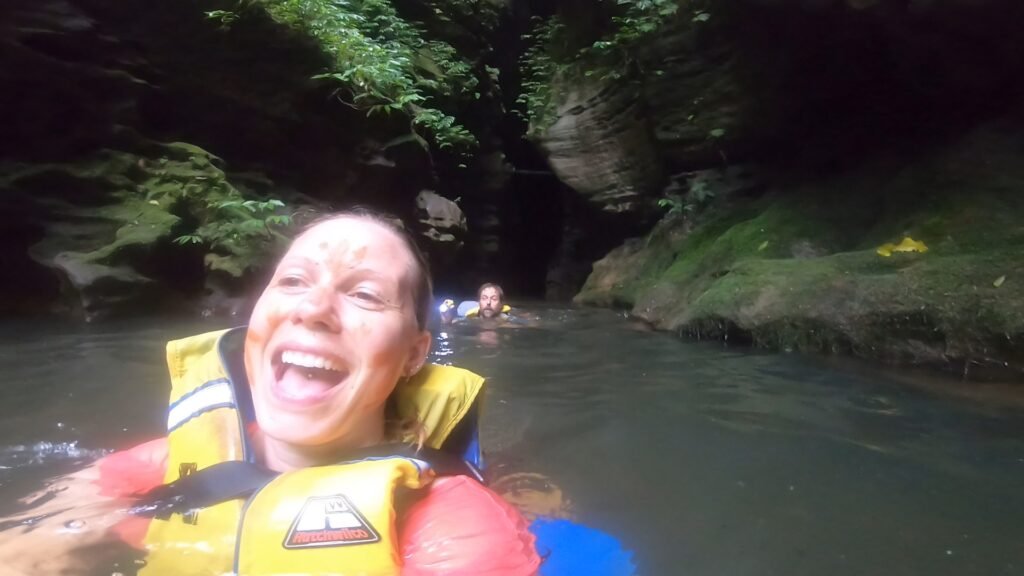
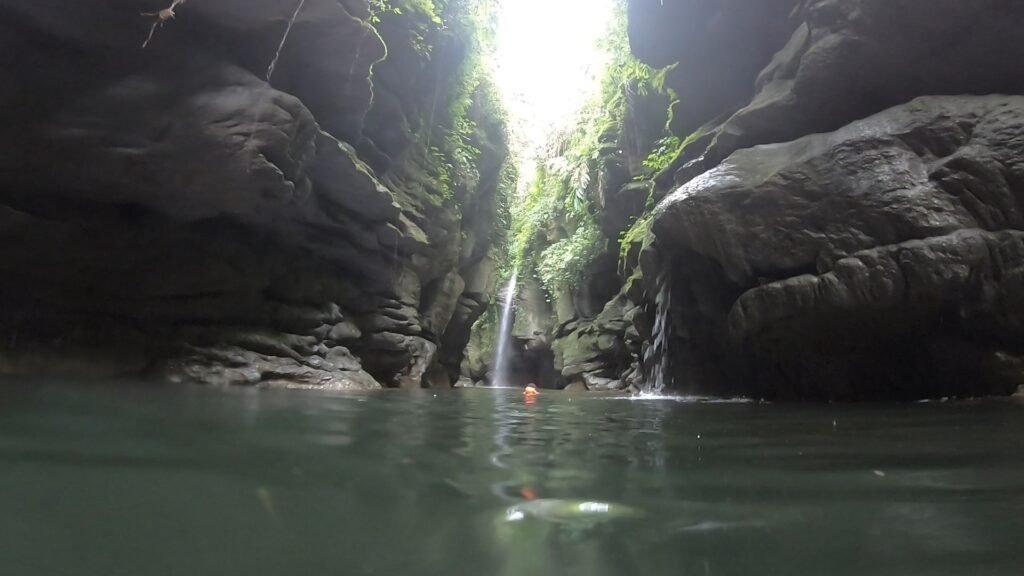
Emerging from the cave, we washed off in the clean part of the river, had a much-needed lunch, and prepared for the canyoning section. This part involved boulder-hopping, climbing, squeezing through crevices, and roping around rocks—all while marvelling at the breathtaking scenery. The grand finale was floating and swimming through the canyon, gliding under waterfalls and diving into deep pools before clambering back onto riverbeds. It was magical until Mark had a small mishap, bumping his shin on a boulder. The result was an impressive haematoma that thankfully started to fade after some time in the cold river. By the end of the canyon, he was back to smiling (and checking for more boulders).
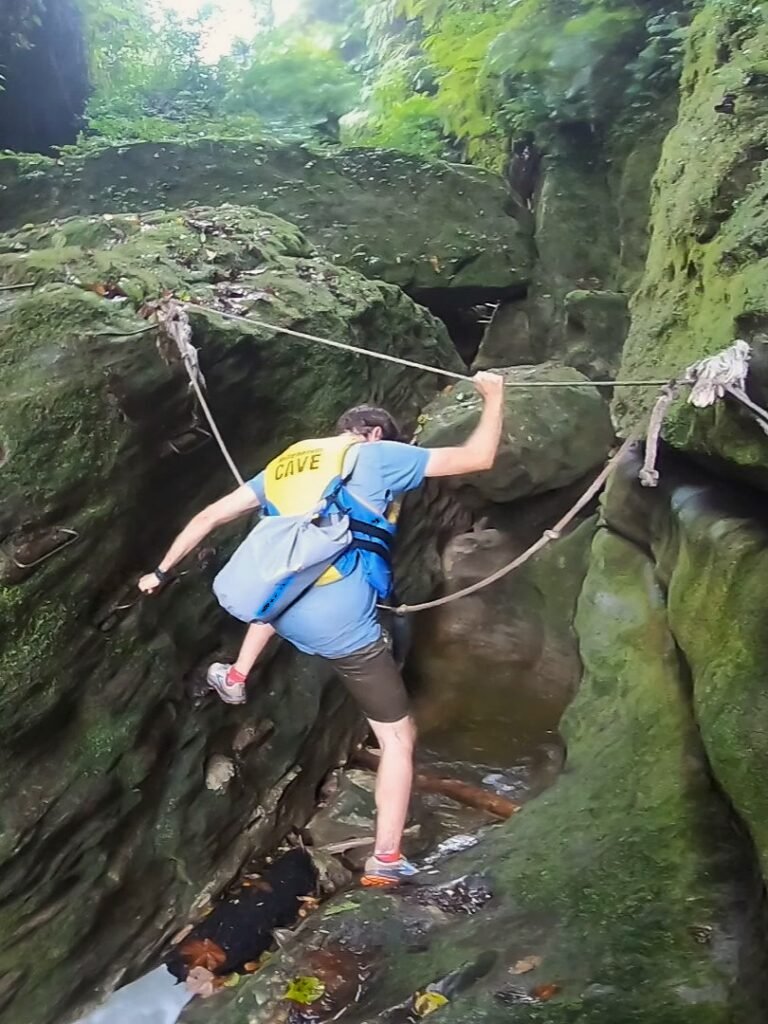
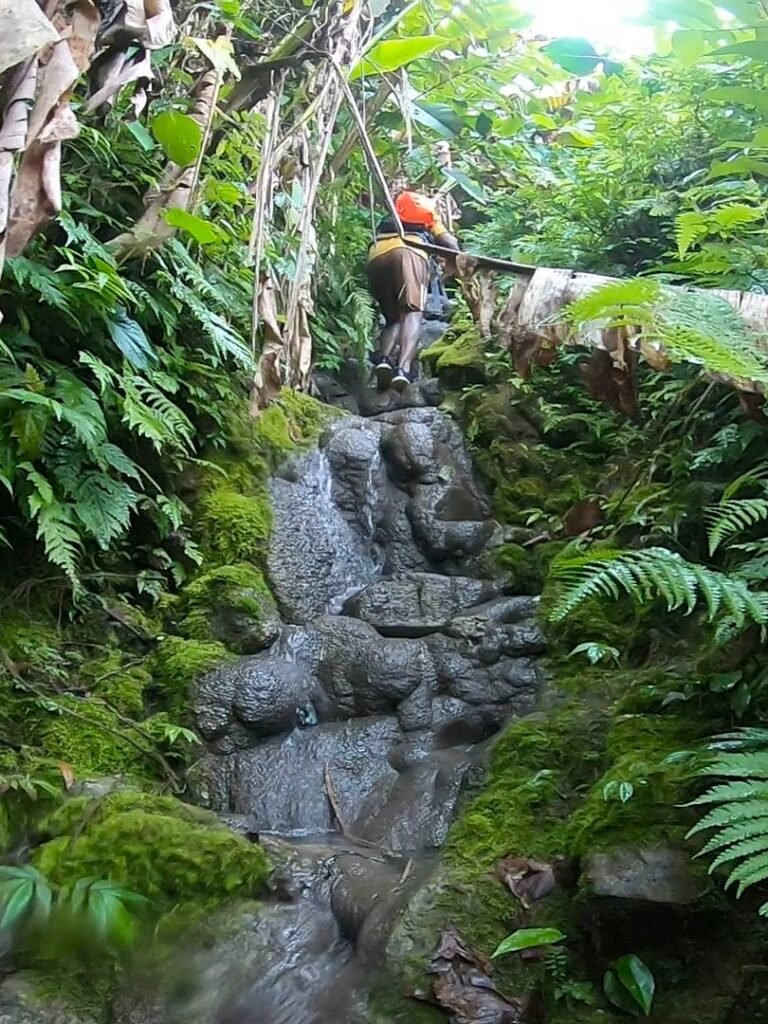
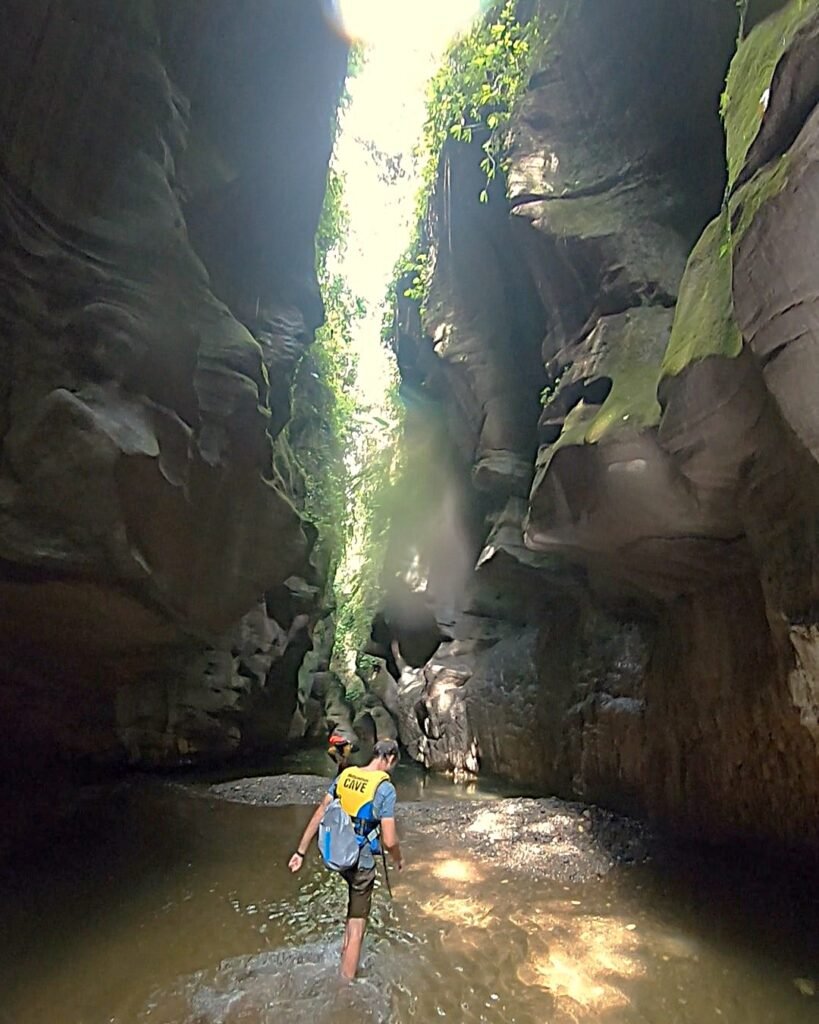
The final leg involved a steep climb up a small waterfall, using ropes to pull ourselves up, before trekking through pineapple and coconut plantations back to the village. There, Tony’s wife welcomed us with hot drinks and fresh fruit, which we devoured before making the muddy return journey over that rickety bamboo bridge.
On the ride back, I made the rookie mistake of staying in my wet clothes (even though I had a dry set to change into). As someone with a history of bladder infections, you’d think I’d know better. Unsurprisingly, I paid the price later, but at the time, the sheer joy of the day overshadowed any regrets.
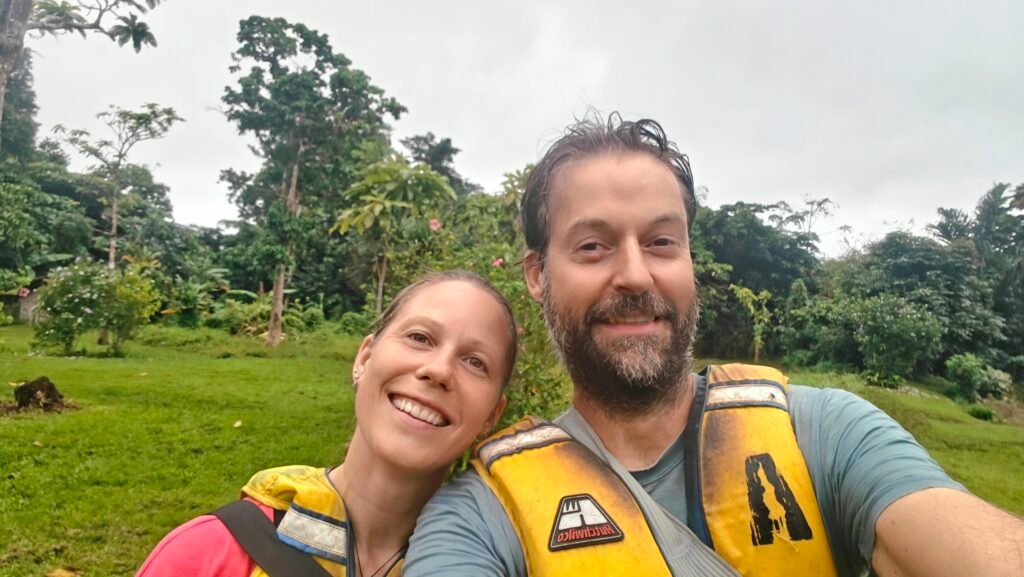
Back on board, we couldn’t stop raving about the experience. It was the perfect mix of physical challenge and breathtaking scenery, and we felt surprisingly energised the next day. When fellow sailors Simon and Line from Navicula Blue arrived, we eagerly shared our stories and photos. Inspired, they booked the tour for the next day and came back just as thrilled as we were.
Looking back, the Millennium Cave Tour wasn’t just an adventure—it was a reminder of how incredible it feels to push your limits, connect with nature, and come out the other side with stories to tell (and maybe a bruise or two).
And if you haven’t watched our YouTube video from the Millennium Caves yet, take a look at this: